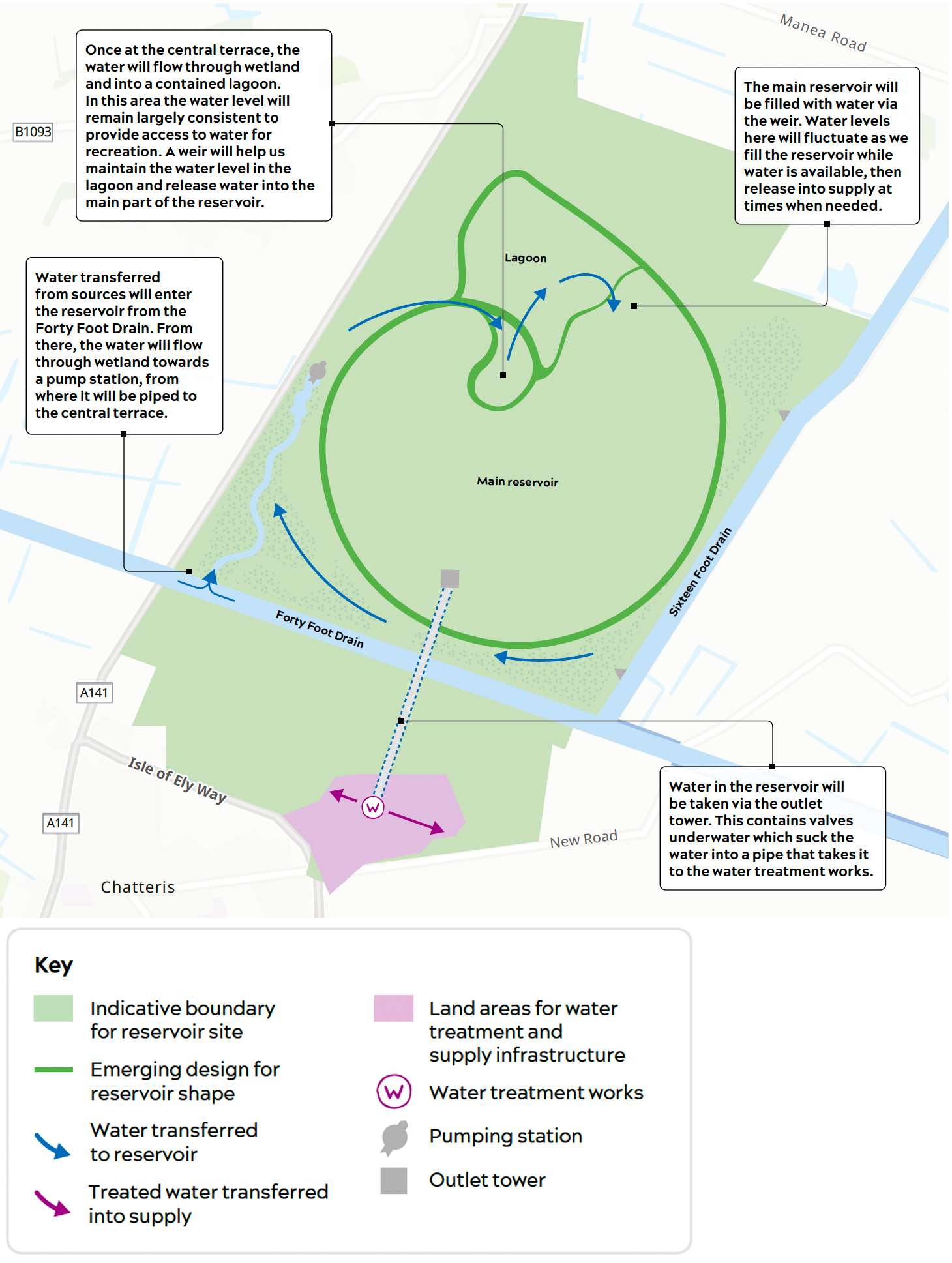The main reservoir site
Developing the emerging proposals
We’ve considered many different factors in developing an emerging design for the reservoir – all of which have influenced our ideas for the features it could include.
Our journey to develop an emerging design for the reservoir has included several stages to consider and test different ideas and options.
We’ve completed a range of activities to help inform our ideas, including:
- Surveys in the area to fully understand the landscape shape and character
- Researching the history of the region and the changing nature of the area, including the influence of people in draining and managing the Fens
- Assessing the wider region and what existing opportunities there are for access to open, green spaces and water, and how people travel around and to the area
- Different shapes and approaches to the reservoir and what opportunities these could provide for recreation, wildlife, and other benefits
- Operational requirements, including the embankment height and profile and how we could use this in the design to reduce impacts and create opportunities All of this, and much more, has shaped our thinking.
Find out more
To find out more about how we developed an emerging design and the factors we considered, read our main site design brochure here.
Operating the reservoir
We will need additional infrastructure that will fill, operate and draw water from the reservoir including pumps, inlets, and an outlet tower. We have considered these components and their potential location when developing the emerging design.

Managing safety at the reservoir
We are designing the reservoir in line with the latest national and international industry guidance and standards, and the legislation set out in the Reservoirs Act 1975.
In addition to high quality design, construction and surveillance, a requirement is to be able to lower (in a controlled way) the reservoir's water level quickly in the event of an emergency (drawdown).
Our current work shows releasing water from the reservoir in a controlled manner into the Forty Foot Drain and the wider Middle Level system, then on to the sea, as the preferred option. This would avoid water being released into the Ouse Washes or Nene Washes. We are continuing to assess options and will consider the potential environmental effects of an emergency drawdown event as part of the Environmental Impact Assessment.
We would incorporate several safety features into the design of our reservoir. These include:
Monitoring and surveillance: as well as ongoing monitoring by skilled operatives and equipment, we are also considering the potential for new intelligent monitoring equipment in the construction of the reservoir.
Spillway: the spillway is a lowered section of embankment with a reinforced outer face. In the very unlikely case that the water level in the reservoir rises beyond the normal operating range, the spillway is designed to overtop, allowing the safe disposal of 'spilled' water.
Bottom outlet valve and pipe: the bottom outlet valve and pipe is designed to allow us to lower the water level within the reservoir quickly in the event of an emergency that threatens the integrity of the embankment.
Test pond: each year we would test the emergency procedure to ensure our systems and plans are in place. At these times, water would be released into a test pond and held temporarily rather than being released. When the test is complete, the water would be pumped back into the reservoir.

Get in touch
Contact the project team today.
Freephone: 0800 915 2492
Email: info@fensreservoir.co.uk
Post: Freepost Fens Reservoir
Useful documents
You can view and download our project documents here
A guide to our proposals and phase two consultation brochure
DownloadPhase two consultation - associated water infrastructure proposals
DownloadPhase two consultation - main site design brochure
Download
Stay up to date
You can keep up to date with the latest project news by:
- Registering for email updates
- Visiting our news page